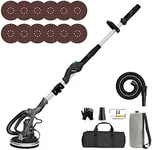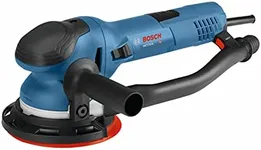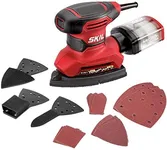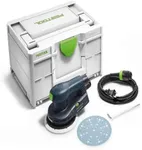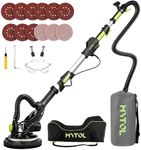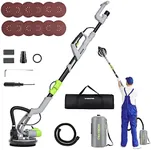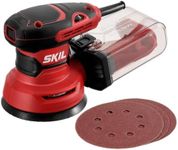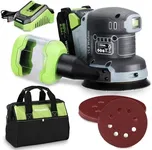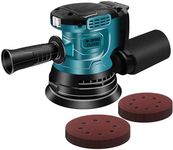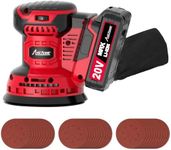Buying Guide for the Best Electric Sanders
Choosing the right electric sander can make a significant difference in the quality and efficiency of your woodworking or DIY projects. Electric sanders come in various types and sizes, each designed for specific tasks. Understanding the key specifications and how they relate to your needs will help you make an informed decision. Here are the essential specs to consider when selecting an electric sander.Type of SanderThere are several types of electric sanders, including orbital sanders, random orbital sanders, belt sanders, and detail sanders. Each type is designed for different tasks. Orbital sanders are great for fine finishing, random orbital sanders offer versatility and are good for both rough and fine sanding, belt sanders are powerful and ideal for removing large amounts of material quickly, and detail sanders are perfect for getting into tight spaces and intricate work. Choose the type based on the specific tasks you need to accomplish.
Power (Amps)The power of an electric sander is measured in amps. This spec indicates how much electrical current the motor can handle. Higher amp ratings generally mean more powerful sanders that can handle tougher jobs. For light to medium tasks, a sander with 2 to 3 amps is usually sufficient. For more demanding tasks, such as heavy material removal or working with harder woods, look for sanders with 4 amps or more. Consider the type of projects you will be working on to determine the appropriate power level.
Speed (OPM/RPM)Speed in electric sanders is measured in orbits per minute (OPM) for orbital and random orbital sanders, and revolutions per minute (RPM) for belt sanders. Higher speeds allow for faster material removal, while lower speeds provide more control for fine finishing. Some sanders come with variable speed settings, allowing you to adjust the speed based on the task. For general use, a sander with a speed range of 6,000 to 12,000 OPM or RPM is versatile. If you need more precision, look for models with variable speed control.
Dust CollectionDust collection is an important feature in electric sanders as it helps keep your workspace clean and reduces airborne dust, which can be harmful to your health. Some sanders come with built-in dust collection systems, such as dust bags or canisters, while others can be connected to a shop vacuum. A good dust collection system will improve visibility and reduce cleanup time. If you work in a small or enclosed space, prioritize sanders with efficient dust collection capabilities.
Pad Size and ShapeThe size and shape of the sanding pad affect the sander's performance and suitability for different tasks. Common pad sizes for orbital and random orbital sanders are 5 inches and 6 inches, with round shapes being the most common. Belt sanders have rectangular pads, and detail sanders often have triangular pads for reaching tight corners. Larger pads cover more surface area and are ideal for large projects, while smaller pads offer better control and are suitable for detailed work. Choose the pad size and shape based on the type of work you will be doing.
Weight and ErgonomicsThe weight and ergonomics of an electric sander affect its ease of use and comfort during extended periods of work. Lighter sanders are easier to maneuver and cause less fatigue, making them ideal for overhead or vertical sanding. Heavier sanders provide more stability and are better for flat, horizontal surfaces. Ergonomic features, such as comfortable grips and vibration reduction, enhance user comfort and control. Consider how long you will be using the sander and the types of surfaces you will be working on to determine the best weight and ergonomic features for you.
